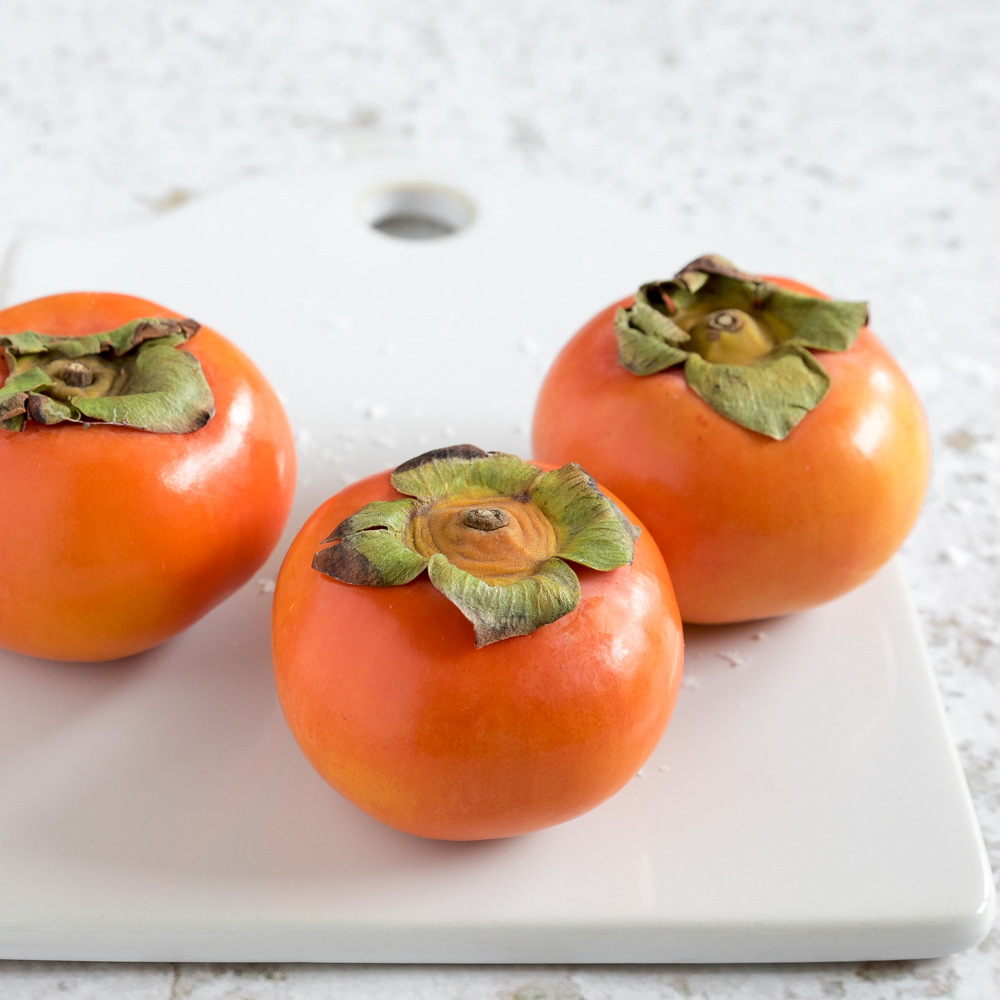The first thing you have to know about persimmons is there are two kinds: the Hachiya and the Fuyu. Both of them belong to the genus Diospyros, which in Greek means “fruit of the gods.” And they are both utterly delicious. But they are completely different beasts when it comes to how you eat them.
 Fuyus (pictured) are pretty straightforward. They have a firm flesh that snaps with crispness when you bite into it. Their flavor is mellow and mild, like an apricot without the acid. They are excellent sliced into fall salads or cut up into wedges and enjoyed on their own.
Fuyus (pictured) are pretty straightforward. They have a firm flesh that snaps with crispness when you bite into it. Their flavor is mellow and mild, like an apricot without the acid. They are excellent sliced into fall salads or cut up into wedges and enjoyed on their own.
Hachiyas on the other hand, must be eaten when they are very, very VERY soft. Impatience is the enemy of a good Hachiya experience. This is because they have high levels of tannins, so when unripe, they taste like a super-green banana that will wick all the moisture right out of your mouth. To actually enjoy eating a Hachiya, you have to let it fully ripen. This could take up to a week or more. Then you remove the calyx (flowershaped stem on top) and use a spoon to scoop out its honeyed, custard like flesh. Have some napkins on hand for this. Their sweet, messy flesh is also ideal for baked goods like breads and puddings, or it can be pureed and used as a sauce for ice cream or pancakes.
So how do you make sure you get the right persimmon?
When selecting for Fuyus, look for a squat, tomato-shaped fruit, that should be heavy for its size. The color will range from pale golden-orange to rich reddish-orange. Usually, the darker the color, the sweeter the taste. If left at room temperature, Fuyus will eventually soften, so store them in the refrigerator to keep them around longer. They’re perfect for eating when they’re firm but not rockhard.
For Hachiyas, look for deep orange, glossy skin and pointed, heart-shaped fruits. Don’t worry if they have some black streaks, those are just sun spots. Place the fruit in your hand; a fully ripe Hachiya will have nearly translucent skin and feel as if it is filled with water. It should be extremely soft to the touch, and move with a jellylike quiver. Unsurprisingly, if you find one this ripe, you should handle it gently and with care. If the Hachiyas you find are still firm, take them home and allow them to ripen. To speed up the process, place the fruit in a paper bag with a banana, which will release ethylene, a plant hormone that promotes ripening. Remember, only eat them when they are very, very, VERY soft.
You can find both varieties in season at the Wedge from late October through early February.
3 easy ideas for eating persimmons
The perfect bite:
Wrap wedges of Fuyus in paper-thin prosciutto. The easiest appetizer ever!
The seasonal salad:
Toss Fuyu slices and pomegranate seeds onto some baby greens, add hazelnuts and a
simple vinaigrette.
The best bread:
Take your favorite banana bread recipe and substitute in pureed Hachiyas. Add dried cranberries and welcome to bread
bliss.